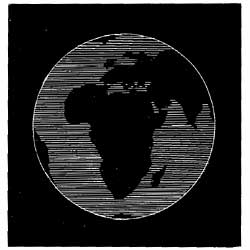Student Notebook:
Through new eyes
I had always assumed that the way medical schools in the United States taught medicine was the best method in the world. But after spending two months in Norway at the University of Oslo's Faculty of Medicine, I began to appreciate how other models are effective and appropriate for their settings. Norway provides free university education and free medical care for its 4.5 million citizens. Medical school is free as well.
In Norway, as in much of Western Europe, students enter medical school right out of high school. The application itself is simple; it includes the student's name, national ID number, and secondary school grade point average.
 Illustration by Suzanne DeJohn My experience in Norway helped me look more critically at our own system and understand why it is structured as it is. |
Basic: The medical curriculum in Norway is a six-year program. It starts with basic sciences, followed by several semesters integrating classroom instruction with about 12 hours a week of clinical experience. Each of these semesters focuses on a different organ system or area of medicine (such as digestion and nutrition)—including its anatomy, physiology, biochemistry, and pathology. Problem-based learning exercises, similar to those used at DMS, are incorporated, too. In the middle of the fifth year, students receive temporary practicing licenses, which give them prescribing privileges. Then students spend the next 50 weeks doing clinical rotations, mostly centered on primary care. Upon graduation, Norwegian medical students enter a mandatory primary-care internship, which includes six months in general outpatient practice, six months in inpatient medicine, and six months in inpatient surgery. Then they obtain permanent licenses and may practice primary-care medicine. Or, if they choose to pursue specialty training, they would enter the equivalent of a U.S. residency.
The U.S. system is quite different. In order to be eligible to enter a four-year medical school, prospective medical students must have graduated from high school and also from a four-year college. I can see how countries that provide free education would consider it more cost-effective to have a six-year training program versus what is essentially an eight-year program in the United States.
Application: Even the application is different and reflects what U.S. medical schools consider to be important; it assesses not only academic performance in college, but also a student's other experiences, community service, and personality. Some U.S. medical schools, like Dartmouth, are interested in applicants who have had other experiences after college. When I entered DMS, only 10 of 80 students in my class were admitted directly from college; others had been teachers or researchers or had earned master's degrees. I think doctors who have tasted life outside of medicine are more mature, have an easier time communicating with patients, are more prepared to make complex decisions, and are better equipped to build that all-important doctor-patient relationship.
The curriculum at DMS consists of two years of basic science and two years of clinical rotations. But some U.S. schools are looking at the European model of integrating clinical rotations into the curriculum earlier. I'm not sure how effective this integrated system is, however. I did a general pediatrics rotation at Maine Medical Center with medical students from an institution that was trying out the European model. Although these students had already had six months more time on the wards than I'd had, I felt better prepared than they seemed to be. Thanks to the courses during my first two years at DMS, I didn't have to teach myself the basics of a given disease. I could understand the grand scope of care. Similarly, I felt better prepared than my fellow medical students in Norway.
Type: Still another difference between the U.S. and Norway has to do with the type of doctors produced. Norway trains more people for primary-care, while the U.S. prepares more of its medical students to become specialists. For example, if a test question asked about a child with signs and symptoms of leukemia, a Norwegian sixth-year student would be expected to recognize and evaluate the illness and know when to refer the patient to a specialist. In the U.S., a fourth-year student would be expected to know specific chemotherapeutic management for the disease. But I can understand why these systems make sense for each country. Norway's mostly rural population benefits more by having primary-care physicians who can send patients to cities for evaluation and treatment. And it's less expensive for the government to subsidize the education of primary-care doctors than that of specialists. Conversely, the U.S. system is more focused on subspecialty micromanagement of most chronic medical problems.
There is, however, a debate in the international medical education community about which approach—U.S. or European—produces happier, more competent, and more efficient doctors. So my experience at the University of Oslo was a fascinating educational opportunity; it helped me learn how to look more critically at our own system, to understand why our system is structured as it is, and to value and respect the doctors and systems of other countries.
I am eager to learn more. In November, I will travel to Cambodia and yet another medical world—one without the technology I'm used to, but with an array of diseases I have yet to encounter. All medical students should be encouraged to participate in international electives. Through such exchanges, we gain a better appreciation for how medicine is practiced and taught around the world and at home.
"Student Notebook" shares word of the activities or opinions of students and trainees. McGuire will graduate from DMS in 2005. Last year, she spent two months on a child and maternal health rotation at the University of Oslo's Faculty of Medicine in Norway.
If you would like to offer any feedback about this article, we would welcome getting your comments at DartMed@Dartmouth.edu.
